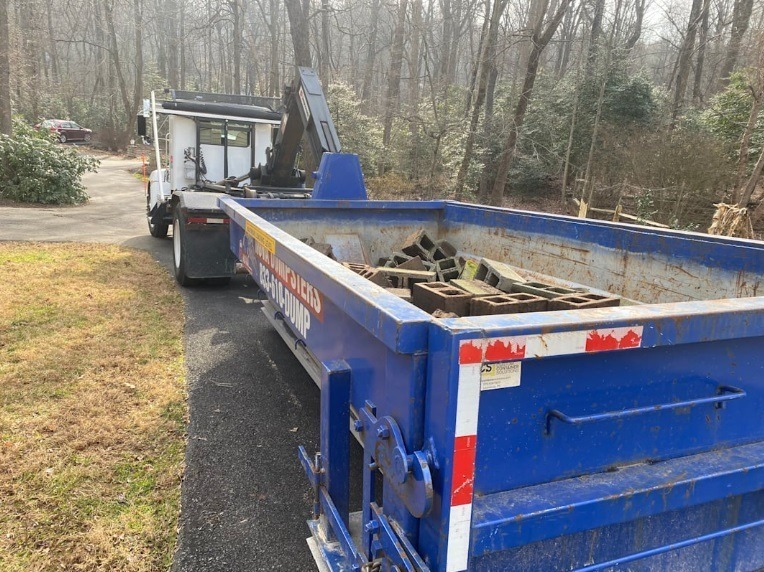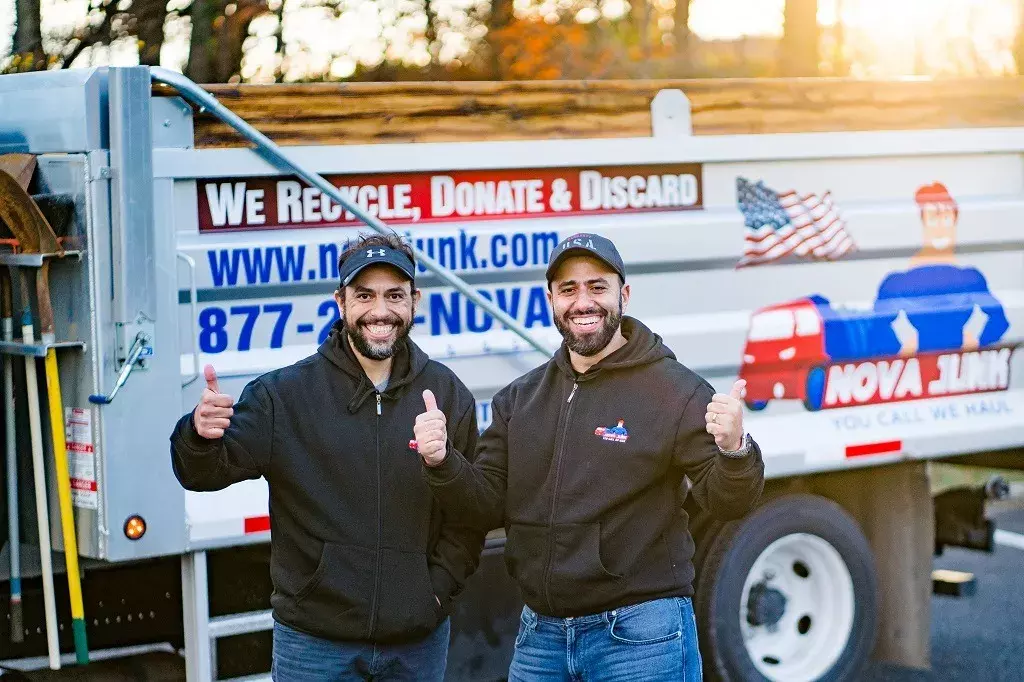Homeowners often face a tough choice between shed removal themselves or hiring pros. The choice depends on cost, time, and safety. Some feel they can handle DIY shed removal well. Others prefer the ease and skill of professional shed removal services.
If you're thinking DIY, consider the costs and benefits. Experts say DIY tool rental can cost $50 to $200 a day. Disposal fees can add $100 to $300 more. But, hiring pros can save time and avoid risks, costing $300 to $2,500.
Key Takeaways
- DIY shed removal can be cost-effective but requires significant time and labor.
- Professional shed removal offers convenience and safety but at a higher upfront cost.
- Consider factors like tool rental costs, disposal fees, and your own availability when deciding.
- Assess the complexity of the shed removal job and your ability to handle it safely.
- Weigh the benefits of hiring professionals against the potential savings of DIY.
Understanding the Shed Removal Process
Knowing how to remove a shed is key for a DIY project or getting help from pros. It's more than just tearing down a building. You need a plan for shed removal, including the right tools and an understanding of potential issues.
Common Challenges in Shed Demolition
Removing a shed can be tough. You might face structural issues, hazardous materials, and access problems. Older sheds might have asbestos or lead paint, which need special care. Sheds on uneven ground or with tricky designs are hard to take apart.
- Dealing with unexpected structural weaknesses
- Managing hazardous waste, such as asbestos or chemicals
- Navigating tight spaces or difficult access points
Knowing these challenges helps you get ready for shed removal.
Tools and Equipment Needed
Having the right tools and equipment is key for a safe and quick shed removal. You'll need:
- Demolition tools like wrecking bars, hammers, and saws
- Personal protective equipment (PPE) such as gloves, safety glasses, and masks
- Heavy machinery like excavators or skid-steer loaders for big sheds
As Contracting Business magazine says, "The right equipment makes a big difference in a demolition's efficiency and safety." Good planning and the right tools lower the risks of shed demolition.
"A successful demolition project starts with a thorough assessment and a well-planned strategy." -
By knowing about shed removal, including common problems and needed tools, you can decide if you should do it yourself or get professional help.
Assessing Your Shed Removal Project
The first step in any shed removal project is a thorough assessment. This step helps plan the removal, spot challenges, and keep everyone safe.
Evaluating Shed Size and Complexity
When looking at your shed, think about its size and complexity. Big sheds or ones with complex designs need more time and effort. Measure the shed's size and note any special features.
For a better understanding, check out shed demolition and removal resources. They can help you learn about the tools and methods for different sheds.
Identifying Potential Hazards
Safety is key when you're assessing your shed removal project. Look for hazards like asbestos, lead paint, or unstable structures. Also, think about the shed's location and how it affects the removal process.
- Check for any hazardous materials that may require special handling.
- Assess the shed's structural integrity to avoid accidents during demolition.
- Consider the environmental impact of your removal methods.

The DIY Shed Removal Approach
Homeowners can save money by removing their own shed. This method needs planning, the right tools, and effort. By doing it yourself, you skip the cost of hiring professionals.
Step-by-Step DIY Removal Process
To remove a shed yourself, follow these steps:
- Prepare the Area: Clear the area around the shed. Remove debris, plants, or anything that blocks access.
- Disconnect Utilities: Turn off electricity and water if the shed has them.
- Dismantle the Shed: Start by taking off the roof, then the walls, and lastly the floor. Use tools like a pry bar, hammer, and saw.
- Remove Debris: Clear away debris as you take apart the shed. This keeps your work area clean.
- Dispose of Materials: Get rid of the shed parts. Try to recycle wood and other materials.
Work safely when removing the shed. Wear gloves, safety glasses, and a dust mask. If unsure, look up online help or ask a pro.
Cost Breakdown for DIY Removal
The cost of DIY shed removal changes based on shed size, materials, and disposal fees. Here's a cost breakdown:
| Expense | Estimated Cost |
|---|---|
| Tools and Equipment | $100-$300 |
| Disposal Fees | $50-$200 |
| Total Estimated Cost | $150-$500 |
DIY can save money, but think about your time and safety. If the shed is big or complex, hiring a pro might be safer and cheaper.
Professional Shed Removal Services Explained
Professional shed removal services make it easy to get rid of unwanted sheds. They handle everything from tearing it down to throwing away the mess. This makes it easy for homeowners.
What Professional Contractors Offer
Contractors have the skills and tools needed for safe and quick shed removal. They do:
- Check the shed and area for dangers
- Take down the shed and get rid of all the junk
- Dispose of materials in a green way
- Clean up the site and make it like new
Experts say,
"Hiring a contractor saves time and keeps you safe from harm or damage."
Professional shed removal services offer a full package.
Average Costs of Professional Shed Removal
The price for shed removal depends on the shed's size, location, and local rules. Costs usually range from $300 to $1,500 or more. It's smart to ask for quotes from different contractors to find the best deal.
Here's a rough guide to costs:
- Small sheds (less than 100 sq. ft.): $300-$500
- Medium sheds (100-200 sq. ft.): $500-$800
- Large sheds (200-500 sq. ft.): $800-$1,500
- Extra-large sheds (over 500 sq. ft.): $1,500-$3,000 or more
Choosing professional shed removal services means a safe, quick, and green way to get rid of your shed.
Time and Effort Comparison: DIY vs. Professional Shed Removal
Deciding to remove a shed yourself or hire pros depends on time, effort, and safety. It's key to think about these when choosing how to remove your shed. This helps you pick the best option for your needs and skills.
Timeline Expectations
Removing a shed can take different times, depending on if you do it yourself or get help. DIY takes longer, based on when you can work, the shed's size, and your tools. It usually takes a few days to a couple of weeks.
But, hiring pros can make it much quicker. They can do it in a day or two, depending on the shed's size and complexity. They have the right tools and people, making the job fast and efficient.
- DIY Removal Timeline: Several days to a couple of weeks
- Professional Removal Timeline: 1-2 days
Physical Demands and Safety Considerations
Removing a shed is hard work. It involves tearing down the shed, getting rid of debris, and dealing with dangerous materials. If you choose DIY, think about how hard it will be and the safety risks.
DIY means you'll do a lot of manual labor. This can be very tiring and might hurt you if not done right. You'll need to wear safety gear, handle tools safely, and watch out for dangers like asbestos or lead paint.
Professional services, however, make it safer. They have trained people with the right safety gear and know-how to handle dangerous stuff. They make sure the job is done safely and quickly, protecting you and your property.
- Wear protective gear, including gloves, safety glasses, and a dust mask.
- Ensure proper tool handling and equipment usage.
- Be aware of potential hazards and take necessary precautions.
In the end, choosing between DIY and hiring pros depends on how much time and effort you can spare. DIY saves money, but pros offer speed, safety, and peace of mind.
Disposal and Environmental Considerations
Removing a shed is more than just tearing it down. It's about handling waste the right way. Think about how your actions affect the environment when you take down your shed.
Proper Waste Management Options
Choosing the right way to manage waste is key. It helps keep the environment clean. Here are some options:
- Landfill Disposal: This is common but not the best for the planet. Make sure it goes to a licensed landfill that cares about the environment.
- Hiring a Waste Management Company: These pros know how to handle construction waste. They help you get rid of it the right way.
- Donating or Selling Materials: If your shed is still in shape, give it away or sell it. This cuts down on waste.
Choosing the right waste management can greatly reduce harm to the environment. It's a big step towards a cleaner planet.

Recycling and Repurposing Shed Materials
Recycling and finding new uses for shed parts is smart. Many parts can be reused or recycled. Here are some examples:
- Lumber: You can use it for other projects or turn it into mulch or compost.
- Metal: Take it to a local scrap metal place to recycle it.
- Roofing Materials: Some, like metal, can be recycled. Others might need to go to a landfill.
By recycling and finding new uses, you help the planet. Think about recycling when you plan to remove your shed. It's a green choice.
For more on eco-friendly ways to dispose of waste and recycling, talk to local services. Or check out online sites about green living.
Legal Requirements for Shed Removal in the US
Knowing the laws about shed removal is key for a smooth process. Homeowners need to follow local rules to avoid trouble.
Permits and Regulations
First, find out if you need a permit to take down your shed. Local laws are different everywhere. You might need to call your local building department to ask about permits.
Things like shed size, location, and if it has harmful materials matter. Big sheds or those near property lines might need special permits.
- Check with local authorities for permit requirements.
- Understand the regulations regarding shed demolition.
- Comply with environmental regulations, especially if the shed contains hazardous materials.
Homeowners Association Considerations
If you live in a neighborhood with an HOA, there are extra rules for shed removal. HOAs have their own rules for how properties look and are kept, including removal.
Look at your HOA's CC&Rs or talk to them to know their rules. Not following these rules can lead to fines or penalties.
"Homeowners should be aware that HOAs can have a significant impact on the shed removal process, making it essential to factor their rules into your planning."
By following both local laws and HOA rules, homeowners can remove their shed without trouble.
Making the Right Choice for Your Shed Removal Project
Deciding between DIY and professional shed removal depends on several things. These include the shed's size, how complex it is, and any hazards. Knowing these factors helps you make a smart choice.
Choosing the right method means looking at the good and bad of each option. DIY can save money but takes a lot of time and effort. Professional services are quicker and more skilled but cost more.
So, whether to DIY or hire pros depends on your situation. Think about your budget, how much time you have, and the shed's state. This will help you decide what's best for your project.

Comments
Post a Comment